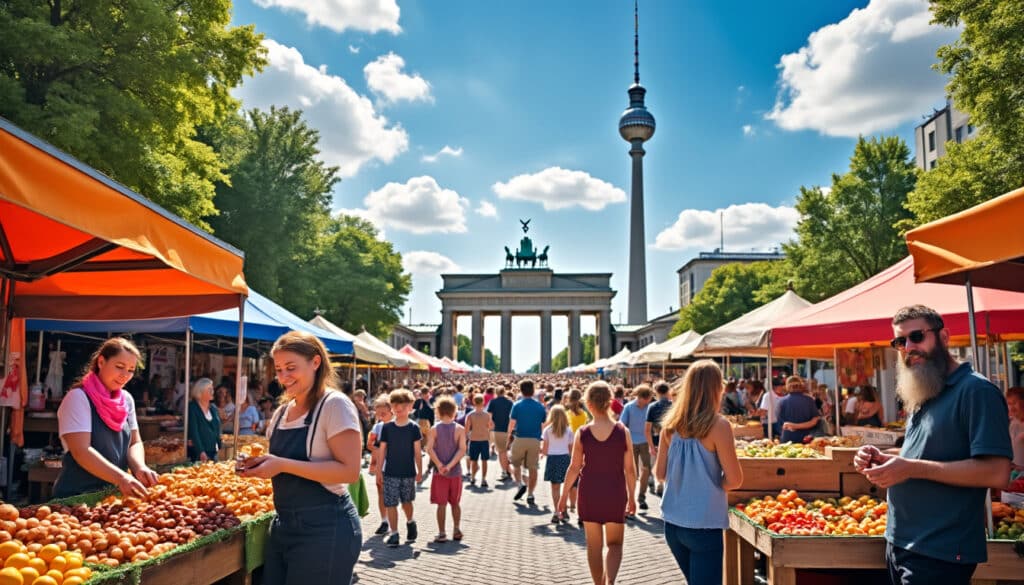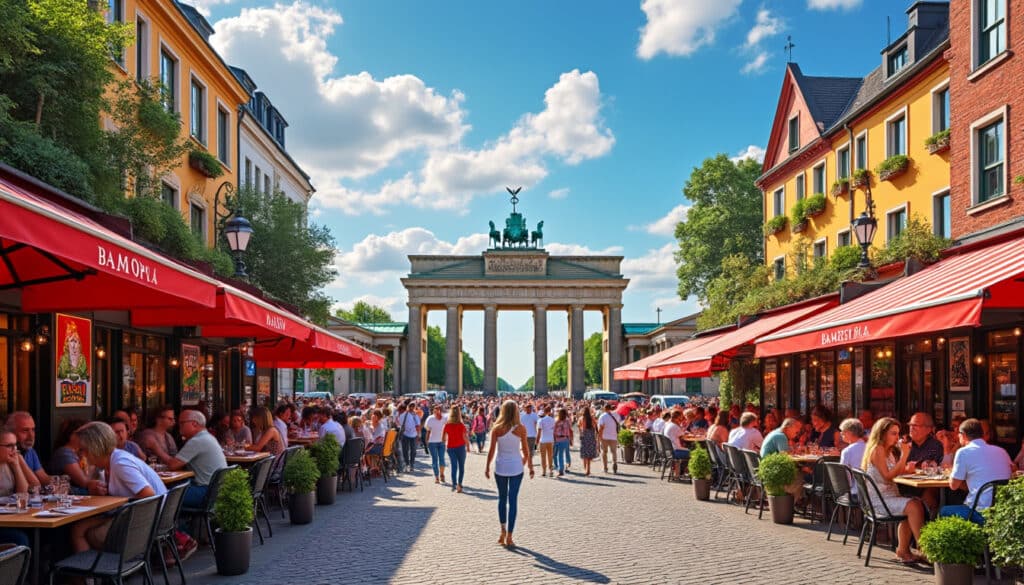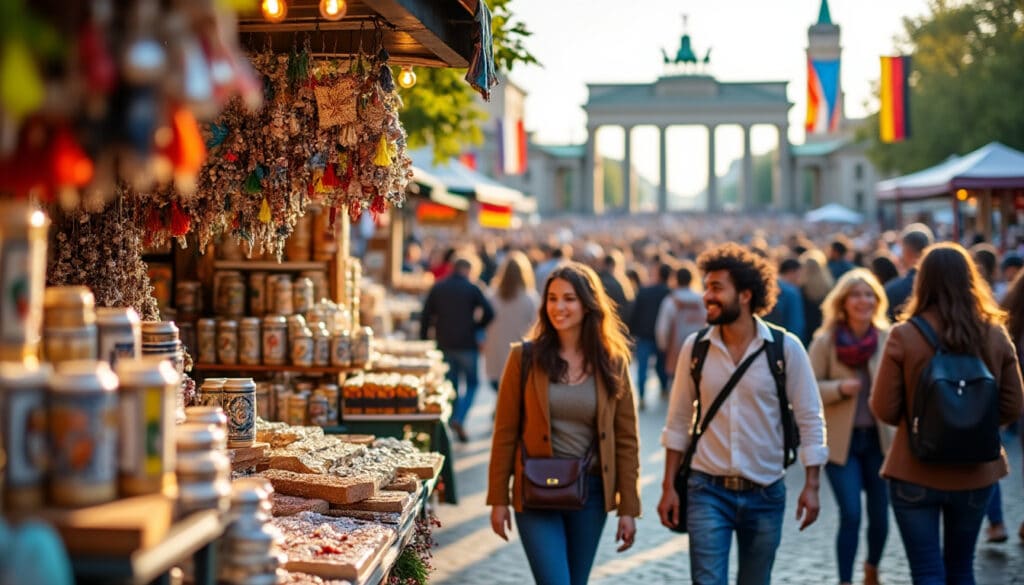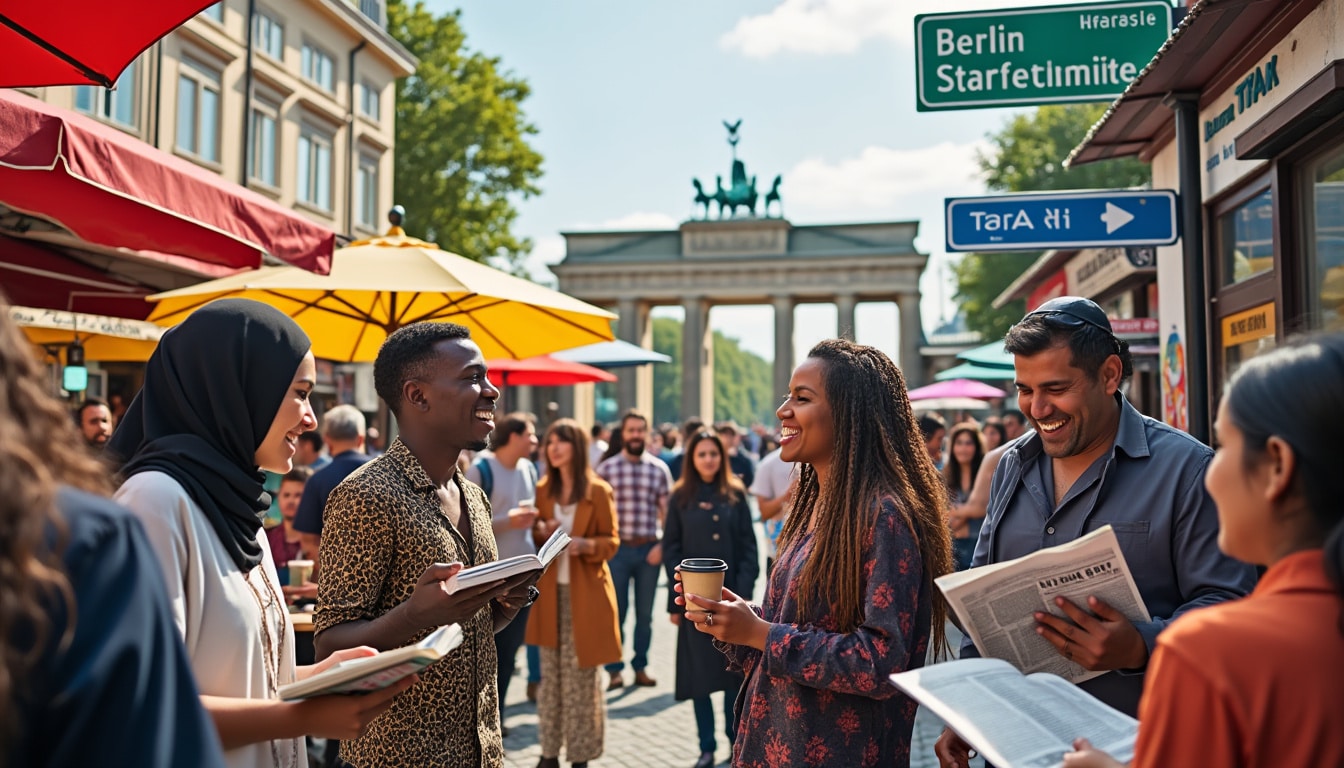Berlin, the bustling capital of Germany, is a place where past meets present, offering a unique linguistic landscape that captivates both residents and visitors alike. As the city evolves, so too do the languages spoken within it, reflecting Berlin’s diverse heritage and its role as a hub for international exchange. Beyond the predominant use of German, the city showcases an array of languages ranging from Turkish and Arabic to English, shaping Berlin’s cultural and social dynamics. This linguistic diversity is not just a testament to the city’s history, but also to its ongoing story of migration and globalization, revealing a tapestry of communication woven through its neighborhoods, public life, and cultural expressions.
Understanding the Primary Language: German in Berlin
German serves as the primary language spoken in Berlin, underpinning the city’s administration, education, and daily interactions. It’s a West Germanic language, deriving most of its vocabulary from the Germanic branch of the Indo-European language family. This language is not only a cornerstone of the city’s infrastructure but also of its cultural identity, as it enshrines the values and histories embedded in the German-speaking world.
A curious aspect of the German language in Berlin is the distinctive Berlinerisch dialect. This dialect offers a flavor of informality mixed with a touch of robustness, characterized by its unique linguistic features. For instance, Berlinerisch ripples with history and local nuances, using colloquialisms that echo the city’s working-class roots and sharply defined cultural landscapes. These language patterns embody Berlin’s straightforwardness and practical nature, often reflected in everyday phrases and expressions.
Delving deeper into the German dialect spectrum, Berlin lies within an area traditionally influenced by Low German but now favors High German, especially in written communication and formal settings. High German is the standard form used across Germany, binding the people through a uniform linguistic framework in government, education, and media.
- 🗣 High German is predominantly used in official settings.
- 🗣 Berlinerisch incorporates elements from Low German, Yiddish, and varied immigrant languages.
- 🗣 The dialect acts as a hallmark of Berlin’s linguistic identity.

Berlin’s German also reflects its multicultural layers, enriched by historical exchanges and modern immigrations. This vibrant language usage aligns with Berlin’s essence as a cosmopolitan nexus; a city where learning German opens doors not just to functionality, but to understanding the spirit of life in its capital.
To learn German in Berlin, aspiring linguists have several options. Institutions like the Goethe-Institut, Berlin Language School, and Lingoda offer immersive language classes tailored to all levels, from beginner to advanced learners. These programs cover grammar, conversation, and cultural contexts, preparing language enthusiasts to engage fully with Berlin’s dynamic atmosphere.
The Rise of English: Global Language in Berlin
English has increasingly become a vital component of Berlin’s linguistic landscape, exemplifying the city’s status as an international center. While German remains the official language, English is widely recognized, especially in business, tourism, and among younger demographics. This bilingual capability broadens Berlin’s appeal, allowing a broader audience to participate in its offering.
In Berlin, English is frequently used as a lingua franca. Businesses, particularly those in the tech sector and creative industries, operate primarily in English. This prevalence is not only due to the necessity of international communication but also benefits from Berlin’s young, innovative workforce where English proficiency is common.
| Sector | Language Usage | Notable Example |
|---|---|---|
| Tourism | English & German | Guided city tours |
| Business | English-dominant | Startup pitches |
| Education | English inclusion | International schools |
English’s role as a second language is encouraged by a notable education system, with schools offering English courses starting from a young age. Programs and platforms such as Skillshare, Babbel, and others enhance learning beyond the classroom, offering courses that improve fluency and confidence.
For digital nomads and expatrios, platforms such as Fluent City and iTalki offer numerous online resources for refining English skills while soaking in Berlin’s vibrant culture and engaging with fellow language enthusiasts from all parts of the globe.
FAQs
- What is the primary language in Berlin? German is the primary language, with English widely spoken.
- Is English widely used in Berlin? Yes, particularly in tourism and business sectors.
- Where can I learn languages in Berlin? Consider the Goethe-Institut, Berlin Language School, or online platforms like Babbel.

Culture & Local Life in Berlin
Berlin, the bustling capital of Germany, is a hub of vibrant culture and diverse local life that continues to attract visitors worldwide. From its storied past to contemporary art scenes and a nightlife that’s second to none, Berlin offers an…

Berlin’s culinary scene is nothing short of spectacular, blending tradition with innovation in a city that’s constantly reinventing itself. From Michelin-starred restaurants near historical landmarks to unique eateries set in former public spaces, Berlin offers a diverse array of dining…

Berlin, a city where history meets modernity, offers a captivating blend of culinary traditions and trends. As one navigates the vibrant streets, the city’s unique meal times and eating customs become evident. Whether it’s indulging in an early evening schnitzel…

Souvenirs and shopping in Berlin
Berlin is not just a hub of history and culture, but it’s also a treasure trove for souvenirs. From quirky items that reflect the city’s unique vibe to traditional gifts that tell tales of the past, Berlin offers an array…



